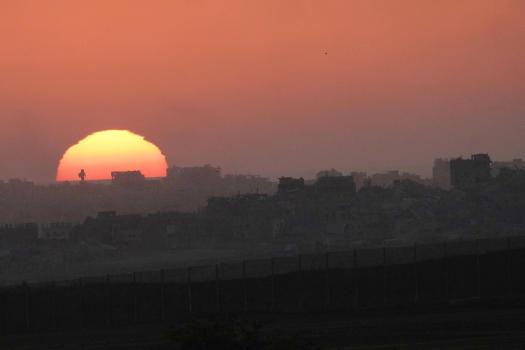Written by Melissa Goldin
Social media users are erroneously asserting that a Harvard University research has found that hundreds of thousands of Palestinians are also missing in the Gaza Strip, as the death toll from the Israel-Hamas conflict continues to increase.
Related Articles
-
US signs agreements with Guatemala and Honduras to take asylum seekers
-
Experts and officials are still assessing what remains of Iran s nuclear program
-
Pentagon leaders cite military tactics to show destruction from US attacks on Iran
-
Iran s Khamenei resurfaces to warn against future US attacks in first statement since ceasefire
-
Today in History: June 26, US Supreme Court legalizes same-sex marriage
Nearly 400,000 Palestinians have been missing from Gaza since 2023, according to an X post that, as of Thursday, had received over 35,700 likes and shares. We have been shouting into a deaf world that this is a Holocaust, and it is still occurring, and Harvard has finally confirmed this.
However, the disputed study was not released by Harvard. Furthermore, these assertions falsify information from the report that was meant to discuss a completely separate subject.
Let’s examine the facts in more detail.
CLAIM: According to a Harvard University study, the Israel-Hamas conflict is causing around 400,000 Palestinians in the Gaza Strip to go missing.
THE FACTS: No such study was published by Harvard. The distance between three major population centers and new assistance distribution complexes in Gaza is depicted on a map that was part of a report by a professor at Israel’s Ben Gurion University, and this estimate is inaccurate. The report’s use of spatial analysis revealed that these compounds are insufficient and fails to address the number of missing persons in Gaza. It was posted on the Harvard Dataverse, a university-run repository where scholars can exchange their work. Contributors can publish directly to the repository without Harvard’s consent and are not need to be affiliated with the university.
Yaakov Garb, an environmental studies professor who wrote the paper, stated that he would have immediately corrected anyone who had questioned him about these figures. Rather, the number was shared and repeated by others who had not read the paper or taken the time to consider it.
A article on the blogging platform Medium contains the erroneous estimate. In order to calculate the number of Palestinians who are allegedly missing, the author of the post uses a map from Garb’s report that shows the population of what are now Gaza’s three main population centers: Gaza City, the central refugee camps, and the Muwasi area, based on estimates from the Israeli Defense Forces. The author deducts the 1.85 million figure from the 2.227 million people that lived in Gaza before to the start of the Israel-Hamas conflict, leaving 377,00 persons missing.
However, the map’s numbers are not all-inclusive.
According to Garb, these IDF figures were not meant to represent the entire Gaza population. Outside of these areas of concentration, Gazans might be found elsewhere.
The Medium post ignores the fact that a large number of Palestinians had fled Gaza since the conflict started in October 2023. In January, the Palestinian Central Bureau of Statistics reported that roughly 100,000 people had departed.
Garb explained that the purpose of the graphic was to illustrate the challenges that residents of these regions would have in getting to new aid distribution locations. Additionally, he pointed out a misspelling, which he plans to correct. The Muwasi area is home to about 700,000 people, not 500,000.
A request for response from the Medium post’s author was not answered.
According to other estimates, the number of missing persons—generally understood to be those who have perished beneath Gaza’s debris—is significantly fewer than what the Medium post claims. For instance, a research published in The Lancet in June 2024 estimated that between 15,000 and 38,000 persons might have gone missing over that period.
It is obvious that more people have perished and been buried beneath debris as time has gone on. However, Shelly Culbertson, a senior policy researcher at RAND who focuses on catastrophe and post-conflict recovery, said it is improbable that the number of people buried under rubble has risen to 400,000 since then. It is improbable that the figure would exceed 400,000, she continued, even if those who went missing included individuals who had lost all contact with their family.
Garb bemoaned the detrimental effects that this kind of false information might have on Palestinians and anyone attempting to assist them.
They have done a damage to the Palestinian cause, which they are purportedly attempting to further, so if someone like me who is doing serious work ever again considers, “Oh my god, do I even want to put out something about Gaza if I have to sully myself with this stuff?” He responded, “I mean, they need to realize that.”
Visit https://apnews.com/APFactCheck to find AP Fact Checks.








